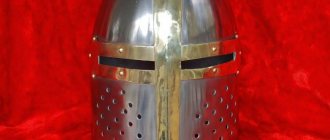Ozonizer
is an electrical device designed to generate ozone from air. Air saturation with ozone is widely used in industry and everyday life for disinfection, combating mold, insects, rodents, removing toxic substances and unpleasant odors.
Industrial ozonizers are widely available on the market, but they are not affordable for everyone. In addition, many people do not have experience using an ozonator and are not sure of its effectiveness.
Why is an ionizer needed?
The famous professor A.L. Chizhevsky wrote that a person built a house for himself, but being inside it, he deprives himself of ionized air, and the more negative ions the air is enriched with, the more beneficial it is for humans.
For comparison, it can be noted that the air in the forest contains about 1500 negative air ions. The air in modern cities, and therefore in homes, contains more than 10 times less useful ions due to numerous vehicles, asphalt, and heating concrete. This is much less than is necessary for excellent health, so far from the city you can breathe much better than in an apartment.
Fortunately, there is a device that can solve this problem. A device that purifies the air and increases the number of negative ions in the apartment is an air ionizer. It helps saturate the air with negative air ions, which release their energy, thereby having a beneficial effect on the health of everyone at home, namely:
- reduce fatigue after a working day;
- restore sleep;
- normalize the functioning of internal organs, including the heart;
- improve memory;
- activate the activity of the immune system.
An ionizer is necessary if elderly people and small children live in the house, especially if they have allergies or are susceptible to colds. In addition, it will be useful for those who are rarely outdoors, working in the office or at home at the computer. Find more information about using an ionizer in a newborn’s room in this article.
Operating principle
A water ozonizer is a set of devices that is used at one of the stages of water treatment . For its operation, only power supply, air and purified water are required. The operation of this equipment is carried out in stages:
The incoming air is dried, cleaned and cooled;- The prepared air passes through a reactor, in which ozone is released from it and mixed with the medium without dissolving in it;
- Then the air mass enters a contact-filtering container, in which, by bubbling (pressing through the liquid) or injection (direct mixing inside the chamber of a special pump), it dissolves in water;
- Here, ozone breaks down into oxygen and reactive oxygen atoms;
- Atoms react with all impurities, oxidize them, kill organic matter, and remove most substances into sediment (coagulate);
- The unreacted gas finally disintegrates in the thickness of the washed coal backfill, which retains the resulting sediment;
- Ozone released to the surface of the water is eliminated in an additional compartment of the tank - a destructor.
If the technology is used for cleaning swimming pools, the scheme is supplemented with a dispenser for chlorine-containing disinfectants . The need for their use is due to the long life of these compounds.
It is noteworthy: unlike conventional chlorination, a 5-10 times smaller dose of chlorine or chloramine is required here.
Appearance of a homemade ozonizer
I decided to test the effectiveness of air ozonation in order to destroy unpleasant odors, pathogens, viruses, mold, insects, mice and rats by making a homemade ozonator in a couple of hours from ready-made components, spending only $5.
The photo shows the appearance of a homemade ozonizer made from ready-made components mounted in a plastic jar intended for storing food.
What kind of cleansing method is this?
Ozone is an unstable modification of oxygen, the molecules of which consist of three oxygen atoms (O3).
It is a highly poisonous blue gas with a pronounced odor. It is characterized as one of the most powerful oxidizing agents.
In nature, it is formed under the influence of electricity (at the epicenter of a thunderstorm) and ultraviolet radiation (in the ozone layer). In both cases, the raw material is oxygen from the air.
Ozonation is a targeted effect on a liquid or gaseous medium by dissolving ozone in it. Methods for artificial gas production are similar to natural ones.
The goals of ozonation are related to the main characteristics of this gas:
The result of this effect is an almost perfectly clean and transparent environment (air or water), saturated with oxygen. In cases where an excess of gas remains, the water may have a bluish tint.
However, in the air, the decay period of ozone is a little more than 1 hour, then only oxygen remains. Therefore, if the technology is followed, it does not pose any danger.
Electrical circuit and operating principle of the ozonizer
The ozonizer is assembled from ready-made components and parts, so almost any home craftsman can make it.
The ozonizer operates from household electrical wiring with a voltage of 220 V. The current through the electrical plug is supplied to switch S1, with which you can turn the ozonizer on and off. The M1 fan serves for more efficient air ozonation. Fuse F1 provides short circuit protection.
The high voltage generator U1 converts 220 V AC voltage into a DC voltage of several kilovolts. From the generator, high voltage is supplied to the ceramic emitter F2, which is a ceramic plate with two conductive tracks printed on it. High voltage breaks through the air gap and electrical discharges appear between the tracks, which are visible as a blue glow, as a result of which the air is ionized.
The fan creates an air flow, which, moving ozonated air from the emitter, evenly distributes it throughout the volume of the room. In addition, the generator and emitter are cooled, which allows the ozonizer to operate without interruption for an unlimited time.
Homemade converter
AC mains voltage can be converted to high voltage by using a car ignition coil as a step-up transformer. A converter with a mains rectifier is placed in front of it, converting the current frequency from 50-60 Hz, say, to 25 kHz - like in a mobile phone charger. If it were not for the high (supersonic) frequency generator, the dimensions of the device would become impressive and heavy, like the built-in power supply of a Soviet tape recorder.
Principle of operation
Before you begin assembling the ionizer, it is important to understand the principle of its operation, and it is quite simple:
- Air particles pass through a corona electrical charge to gain a negative charge.
- Along with the air, dust, bacteria and viruses pass through the charge, so they also become charged.
- Charged substances are attracted to the plate, which has an opposite charge, and settle on the surface of the device. They can then be removed by wiping the ionizer body with a regular damp cloth.
Coronary discharge is created by high voltage electrical current. Like pulses, it is supplied by a step-up metal transformer to sharp electrodes. In this case, ozone molecules are immediately formed, which are considered harmful to health, so it is better to make the device yourself in order to comply with all the necessary standards.
Ozonation for domestic needs, selection and maintenance of equipment
Household duct (installed in the ventilation system) or apartment ozonizers, similar to a vacuum cleaner, are becoming increasingly popular.
But getting a glass of clean water is not the same as providing a private home with it in full.
Full-fledged water ozonizing equipment is usually not installed in apartments due to economic infeasibility . After all, main water is usually clean enough for everyday needs.
For drinking, many use imported water or use filters that purify a small but sufficient volume. A well that supplies a cottage is a completely different matter. Iron, organic matter, and hydrogen sulfide are not uncommon here.
However, the use of an expensive ozonizer, which also consumes a lot of energy, is also not always justified .
But the use of ozonation as a method of disinfection as part of a treatment complex may be justified . Especially when we are talking about an installation that works not for one house, but for a village, city, factory, hospital, etc.
A generalized vision of the ionization technique under consideration
Creating a water ionizer with your own hands, of course, is impossible without a clear understanding of the basics of ionization technology. In addition, you should initially test the quality of tap water, which is supposed to be used for a homemade ionizer.
There are many liquid content testing kits on the market, however, the best way to conduct a water test is to contact a certified laboratory. The main reason for this approach (testing within the laboratory) is the accurate determination of the amount of oxygen dissolved in the liquid, plus an accurate determination of the “pH” parameter.
True, the “pH” value for the liquid under study can be determined directly at home using special (litmus) paper or using an electronic “pH” meter.
Household devices that electrolyze drinking water have been offered on the market for several years. Electrolyzers produce (separately) acidic and alkaline water (ionized). Also in practice there are other names for this type of water:
- electrolyzed reduced,
- alkaline-ionic,
- electrolyzed cathode.
Acidic water is not suitable for drinking, but is successfully used for facial and hand hygiene and body care. Alkaline water, on the other hand, is suitable for drinking, so ionizer technology is considered in commercial and marketing literature primarily as useful in the treatment of:
- gastrointestinal tract,
- hypertension,
- diabetes,
- malignant tumors.
The recommendations contained in the instructions supplied with water ionization devices recommend drinking 1.5–2.0 liters of such a product, regardless of the age, gender and health status of the consumer.
IONIZER
One of the many models of water ionizer for home use, made at an industrial level. Meanwhile, it is quite affordable to make a water ionizer with your own hands from available parts
Perhaps the consumption of ionized drinking liquid is truly beneficial if it actually helps relieve symptoms in patients, complementing classical methods of treatment, as some distributors of ionizers claim.
However, there may be public health concerns if ionizers are capable of causing harmful side effects in otherwise healthy people or concealing illness in apparently healthy consumers.
Types of ionizers and characteristics of produced water
The market offers many types of more or less advanced water ionizers. Most of the ionizers are made in Japan, but no less technologically advanced water ionizers are also quickly filling the market:
- U.S.A,
- Canada,
- Australia,
- China.
The average annual sales of ionizers is more than 200,000 devices priced from $600 to $3000. Meanwhile, the inventors of this kind of device (developers of the technology) are Russian scientists from the 1900s.
We recommend reading: How to choose a suitable heater?
Technological principle of separation/purification into components
All manufactured water ionizers are connected directly to the water supply. Filtration before the ionizer is carried out through at least one filter with activated carbon, which is necessary to reduce the level of chlorides in tap water (prevent damage to the electrolytic cell of the ionizer).
GERMAN
Block diagram of connecting a classic ionizer for the production of a final product purified from impurities: 1 – tap water; 2 – primary carbon filter; 3 – secondary ceramic filter; 4 – acidic pH = 4-6; 5 – alkaline pH = 8-10
The filtered liquid allows a minimum mineral content of 50 mg * l-1. These conditions are required to produce electrolysis in a working chamber with an anode and cathode, which are separated by a semi-permeable plastic-based diaphragm. Flat (mesh) electrodes are made of titanium coated with platinum. The electrolysis process produces acid and oxidized water at the anode.
When electrons pass through an electrical circuit, mineral ions (HCO3-, Cl-, HSO4-, NO3-,...) accumulate in the anode compartment. As protons and oxygen are released, the liquid acquires a pH value of 4 to 6 and an oxidation-reduction potential that can reach +900 mV.
In contrast, reduced alkaline water is formed in the cathode compartment. For this option, mineral cations (Na +, K +, Ca2 +, Mg2 +, ...) accumulate at the cathode. As hydroxyl ions and hydrogen are formed, the pH value of the water changes from 8 to 10, and an oxidation-reduction potential of -600 mV is acceptable.
KITCHEN
This is roughly the “picture” of the course of the chemical reaction inside the ionizer, as a result of which two types of treated liquid are obtained at the output of the device - drinking and technical
The effectiveness of the device, the resulting pH values and redox potential values vary greatly and depend on:
- on the characteristics of the local water supply,
- on voltage and current values,
- on water flow and temperature.
The effect of a water ionizer from a practical point of view
The main effect of electrolysis is a significant reduction in the rH2 value (electronic activity) compared to the original tap water, while the pH values and resistivity potential remain relatively stable.
A comparison of rH2 values with those of mineral water shows that ionized water is a highly alkaline product. Compared to conventional drinking water sources, the ionizer produces pH and Eh values that are rarely found in the natural environment.
Therefore, in scientific circles such water is usually classified as synthetic water. Regarding resistance, you can find a range from 1600 to 1700 Ohm * cm, which is stable over time and remains within the acceptable official norm of 900–5000 Ohm * cm.
In terms of pH, this range can vary digitally from 6.8 to 8.7 for a given type of equipment, and also remain relatively stable over time. By comparison, the regulatory drinking water standard recommends a pH value between 6.5 and 9.
The water ionization procedure does not lead to abnormal pH values. Regarding the redox potential, the values range from -654 to +680 mV. There are strong changes over time for negative reduction potentials and better stability for positive reduction potentials.
After adjusting for the effects of pH, rH2 (electronic activity) is between values of 2 and 45. These numbers mean that water ionizers can effectively produce oxidized water, or vice versa, water is an antioxidant.
Using an ozonizer at home
The table of the required ozone concentration to combat unwanted neighbors shows ozonation regimes. The Recommendations for Ozonation describe in detail the methods of using the ozonizer. Therefore, I will only give a brief overview of the most popular cases of using a homemade ozonizer at home.
Ozone treatment of refrigerator chambers
You can treat the refrigerator chamber with ozone without turning it off and removing food. It is enough to place the ozonizer on the top shelf, turn it on for 5-10 minutes and do not open the door for several hours. During this time, all surfaces of the refrigeration chamber and food packaging will be disinfected.
In addition, the channels of the cooled air supply system and the evaporator, which cannot be processed using traditional methods in modern refrigerators, will be disinfected. Food vapors accumulate in them and harbor microbes. As a result, even after washing the chamber, an unpleasant odor may be present in a refrigerator that has been in use for several years.
Ozone treatment of storage cabinets
When winter outerwear, especially those made of wool and fur, are stored without ventilation, moths may develop in closets. To prevent damage to things by moths, it is enough to place the ozonizer in the closet, close the doors tightly and turn it on for 10-15 minutes and then do not open the closet as long as time allows.
Even one cabinet treatment per year will eliminate the appearance of moths and temporarily eliminate the unpleasant odor.
Ozone treatment of upholstered furniture
New upholstered furniture - armchairs and sofas with leather or fabric upholstery, usually emit a specific unpleasant odor that disappears over time. If you want to speed up the process, you can treat the room with ozone.
If the room is large or the smell is very strong, then you can wrap the products in plastic film and install an ozonizer under it. Ozone penetrates perfectly into materials with a porous structure, so 10 minutes of treatment is enough and the smell will disappear.
In the same way, you can disinfect and eliminate unpleasant odors emanating from old upholstered furniture. If the smell still remains, the treatment should be repeated, increasing the ozonation time.
Ozone treatment of shoes
With intense movement, especially running, your feet sweat and shoes, especially sports shoes, begin to smell unpleasant inside. Aromatic deodorants only mask the odor without destroying the cause of its occurrence - microbes. If you place shoes together with the ozonizer in a plastic bag or sealed plastic container, then after 15 minutes of operation of the ozonizer followed by exposure, the shoes will stop smelling and all microorganisms will die. If the smell has not completely disappeared, you need to repeat the treatment, increasing the duration of exposure.
To disinfect deep shoes, such as boots, a faster effect is achieved by using an ozonizer with a compressor, from which the ozone exits through a tube. The boots are also placed in a small closed volume, and ozone is supplied directly to the tops.
Ozone treatment of vegetables and fruits
At home, you can increase the shelf life of small amounts of vegetables and fruits several times. To do this, washed vegetables or fruits should be placed in a plastic bag of sufficient volume, an ozonator should be inserted into it and turned on for a couple of minutes. Next, quickly remove the ozonator and tightly close the neck of the bag.
For example, cucumbers, when processed daily, since the bag was opened every day to prepare a salad, after a week they looked as if they had just been picked from the garden.
Ozone treatment of water
Using an ozonizer you can disinfect water. Currently, in many countries of the world, instead of chlorination, ozonation is used at drinking water treatment stations as a more effective way to disinfect it.
Ozonation is an ideal option for disinfecting water in swimming pools, without leaving ozone and its odor in the water, as when treated with chlorine, which adversely affects the skin and mucous membranes of the eyes. But ozonation of pools is rarely used, since it is the most expensive and existing method of disinfecting pool water.
To disinfect water at home, you need an ozonizer with a compressor that supplies ozone through a tube. At the end of the tube, for maximum contact of ozone with the volume of water, a diffuser is installed, which many have seen in aquariums.
Ozonation at a summer cottage
The use of a homemade ozonizer when growing vegetables in a summer cottage, according to scientific research, proves to be highly effective in pest control.
To destroy harmful microorganisms in the soil, you can, when the plants are not yet planted in the greenhouse, cover the soil at a height of several centimeters with plastic film, place an ozonizer under it, and turn it on for a couple of hours.
To disinfect seeds before planting at home, it is enough to place them in one layer in an airtight container and use an ozonator to create an ozone concentration of 10 mg/m3 and leave for a couple of hours. The seeds will become sterile.
One of the main enemies of plants is the root-knot nematode, which inhibits their root system. If you water the root system of a plant several times with water with a high concentration of ozone, then, according to scientists, up to 90% of the nematode will die.
Ozonation is effective for pest control in greenhouses and in the presence of plants. Ozone concentration should be no more than 2 mg/m3, treatment time is a couple of hours
Types of ionizers
There are several methods of artificial air ionization, each of which requires special attention.
UV
Hospital wards, premises in preschool institutions and schools, especially during periods of viral infection, are treated with a quartz lamp, which is an ultraviolet ionizer.
While this lamp is operating and for half an hour after it is turned off, it is not recommended to stay indoors, as ozone and nitrogen oxides are formed in the air, which can be determined by the characteristic odor. 30 minutes after the lamp is turned off, the air again becomes safe to inhale as these particles disintegrate due to their unstable nature.
Hydrodynamic
Such an ionizer sprays water that has an electrical charge, that is, it produces not light negative air ions, but water dust (aerosol) with an electrical charge.
Initially, similar ionizers were produced for domestic purposes - they turned distilled water into water dust. Later, scientists found out that they were of little benefit, so the device was discontinued, but the method was not forgotten, but became widespread in medical practice. It is used to produce electroaerosols from medicinal liquids.
Crown
This device is also called an effluvial air ionizer. It works using the coronary discharge method and is equipped with an electrical circuit. Performs the function of converting alternating voltage into high voltage (several tens of kilovolts).
It is the corona ionizer that is assembled at home. It has a peculiar design with pointed electrodes, on which voltage is applied. A corona discharge occurs. As a result, electrons seem to flow down to the tip and are captured by oxygen molecules. The operating principle of such an ionizer is clearly shown in the diagram:
In simple devices, the operating mode is unregulated, as is the ion output, but there are more complex modifications with adjustable control. They take into account the voltage of the surrounding electric field and, depending on it, adjust the voltage on the electrodes.
Household appliances using corona discharge are of two types:
- unipolar - produce only negative ions;
- bipolar - produce negative and positive ions.
Household appliances in an apartment already produce positive ions, while negative ones are considered useful, which means it is more advisable to assemble a unipolar ionizer.
If there are no household appliances in the room, you can assemble a bipolar device, since the imbalance between ions of different signs will practically negate the positive effects of negative particles. However, there are opinions that bipolar devices do not have any beneficial effect, since the negative particles produced will be attracted to the positive ones, forming a neutral zero charge. So, the device will only spin the counter in vain, without producing anything useful.
Making a device yourself
If you have the desire and certain knowledge, you can make an ozone installation yourself. To assemble, you must have at least basic electrician skills.
The following materials should be prepared:
- glass 3 mm thick;
- foil;
- 12 V power supply;
- can;
- high voltage generator;
- insulating tape;
- sealant;
- plastic container;
- copper wires in insulation;
- plastic tubes.
The end of the wire is stripped and laid on the glass. Foil is glued on top. Now you need to attach four plastic supports with rounded ends to the can. Glass supports must be secured to them so that the distance between the glass and the tin can is ½ mm.
A second electrode is attached to the edge of the jar. Now you need to do a test run. A bluish glow should appear between the foil layer and the tin container. If this happens, you can move on to the next stage.
At the bottom of the jar you need to make a hole, the cross-section of which corresponds to the diameter of the hose. The stripped end of the wire and the spring are soldered to the center.
The jar and glass are secured together. The glass is then placed on the bottom of the plastic container. It is necessary to make holes in the cover through which wires and hoses will be supplied. In this case, the plastic container serves as the outer casing. It must be carefully sealed.
After the sealant has hardened, the power supply, compressor and generator are connected. Ozonation should be carried out in a ventilated area, as this gas can burn the respiratory tract and lead to poisoning.
Materials and tools
The scheme is simple, just remember the school course in physics, and at the same time chemistry. To begin, select two plastic containers with a capacity of 3.8 liters of water each. They will become separate chambers for the electrodes.
You will also need:
- PVC pipe 2 inches;
- a small piece of chamois;
- alligator clips;
- electrical wire;
- power supply system of the required power;
- two electrodes (can be titanium, copper or aluminum).
All parts are available, many can be found at home, the rest can be purchased at the construction market.
Indoor and auto tests
The scheme was made in several copies and it was already possible to ozone not only the car, but also the garage and the room. The effect is really interesting, because the smell of ozone lasts for several days even after ventilation, and unwanted odors are completely eliminated. In the musty barn, the smell also disappeared completely. The smell of ozone, despite the long weathering, was still noticeable after 2-3 days, but after this time everything became fresh and without a stink.
GOST requirements for ionizers
The ionizer releases negatively charged particles, which are measured in 1 cm3. This parameter is called the air ion concentration and is basic for any type of ionizer. According to GOST requirements, the minimum and maximum permissible values of the parameter are determined. They can be found in the table:
| Standardized indicators | Air ion concentration | Unipolarity coefficient, y | |
| Positive polarity | Negative polarity | ||
| Minimum allowable | ≥ 400 | >600 | 0.4<=y <1.0 |
| Maximum allowed | < 50 000 | ≤ 50 000 | |
We recommend reading: Thermostatic valve: types, installation and use features
To preserve the meaning of an air ionizer, it is worth considering that the indicator at a distance of 1 m should be no less than the indicator of the natural concentration of air charges, that is, at least 1,000 ions/cm3. In this regard, it is advisable to adhere to a concentration indicator of 5,000 ions/cm3.
GOST also defines the requirements for the voltage at the emitter, that is, at the ionizing electrode. It is measured in kV. In the case of household air ionizers, this voltage should be in the 20-30 kV corridor.
If it is more than 30 kV, then the meaning of using such a device is lost, since a voltage of 20 kV is sufficient for the stable formation of ions. In addition, this is fraught with the formation of spark discharges, which contribute to the release of compounds harmful to the body, for example, ozone.
Emitter assembly
If you are unable to obtain a ceramic insulator, ordinary window glass will replace it. You can also use PCB, from which the current-carrying tracks of the old printed circuit board have been removed using a powerful soldering iron. You need to do the following operations.
- Cut two plates of fiberglass with a thickness of at least 3 mm and dimensions of 10x10 cm.
- Place and secure an 8x8 cm aluminum plate on one of these pieces. Do the same with other aluminum and fiberglass blanks.
- Next, attach a piece of glass of the same size to this plate. Glass thickness – at least 2 mm.
- Fasten the entire “sandwich” using external staples, placing them as far as possible from live parts. And also adapt it for fastening inside the case by installing screw stands or plastic tensioners.
A wider gap (over 2.5 mm) will result in no discharge. A narrow one will lead to the fact that the glass, on the contrary, will soon be burned through, and this is already a pierced dielectric, which is not recommended to be used.
Selecting an ozone generator by performance
The basis for the manufacture of a homemade ozonizer was a ready-made unit purchased from the Chinese online store “AliExpress”, consisting of a high-voltage generator and an emitter.
The ceramic emitter was already soldered to the high-voltage wires of the generator and carefully wrapped in foam rubber.
The type of generator was selected based on the supply voltage for which it was designed and the productivity of ozone production. For domestic use, the optimal ozonizer is one designed for an AC supply voltage of 220 V with an ozone output of 200 mg per hour. To ozonate the car interior, you need to choose an ozonizer designed for a DC voltage of 12 V with a plug for connecting to the cigarette lighter of the same performance.
If there is no performance data in the description or on the generator body, then it is better not to purchase such an ozone generator, due to the inability to calculate the time for ozonizing rooms.
Choosing an ozonizer
When choosing an ozonizer, in addition to additional functions, for example, a timer, you should pay attention to the productivity of the ozonizer, which is expressed in the amount of ozone generated per hour.
For using an ozonizer at home, with the exception of mold control, when the volume of an enclosed space is usually less than 50 m3, an ozonizer with a capacity of 150 mg/hour or more is quite suitable.
For clarity, I have given in the table the technical characteristics of the most popular models of household ozonizers. Any of them is quite suitable for use in everyday life.
| Technical characteristics of popular ozonizers | |||||
| Characteristics | Ozonizer model | ||||
| "Tienshi" | "Storm" | "Altai" | "JQ-881" | "Milldom" | |
| Productivity, mg/hour | 150 | 300 | 400 | 400 | 500 |
| Indoor air purification area up to, m2 | 40 | 50 | 70 | 70 | 110 |
| Possibility of water ozonation | There is | No | There is | There is | No |
| Continuous operation time, min | 40 | 30 | — | 30 | 30 |
| Presence of a timer | digital | digital | mechanical | — | digital |
| Supply voltage, V | 220 | 220 | 220 | 220 | 220 |
| Power consumption, W | 15 | 30 | 18 | 30 | 10 |
| Manufacturer | China | Russia | Russia | China | Russia |
All operating instructions for ozonizers indicate not the maximum volume of the room to be treated, but its area. Obviously, this was done for the convenience of users, since people know the area of each room in their apartment well, and the average height is about 2.5 m.
If you need to fight mold or if the room volume is more than 200 m3, you should purchase an ozonizer with a capacity of 1 g/hour. A simple rule works here: the greater the productivity, the better, since it will be possible to create the required concentration of ozone in the air in a shorter time. The only limitation is the price of the device, which increases exponentially with the increase in the productivity of the ozonizer.
If the operating instructions for the ozonizer do not indicate its performance, then I advise you to refrain from purchasing such a device, since it will be impossible to calculate the ozonation time.
Ozone is one and a half times heavier than air and tends downward during ozonation. For the same reason, when ozonating, the ozonizer should be installed at the highest possible height.
Therefore, it is better to choose an ozonizer with a built-in fan, which will better distribute ozone throughout the room. In addition, due to the good cooling of the generator and the ozonizer emitter, it can operate around the clock, without shutdowns. If the ozonizer does not have a fan, then, as a rule, the continuous operation time of such an ozonizer is limited.
Useful recommendations on how to make an ozonator correctly and quickly
If you have no experience as an electrician or radio technician, the most useful recommendation would be to go to a hardware store and buy a factory-assembled ozonizer. If everything is not so bad with skills, then before assembling the unit, you should familiarize yourself with the design of ready-made devices, and take a ready-made working diagram instead of reinventing the wheel. An ozonizer is a high-risk device, so it is better to learn from the mistakes of others than from your own. The time spent getting acquainted with ready-made, working devices will more than pay off.
Important nuances of assembling a homemade household ozonizer
The most important point is the assembly of the emitter.
It is necessary to correctly select insulating materials, and also make sure that the aluminum plates of the emitter do not contact each other, otherwise a short circuit may occur with the ensuing consequences. It is mandatory that the finished device is mounted in a durable, non-electrically conductive housing. The question here is no longer about aesthetics, but about the safety of using the ozonizer.
An important nuance is the qualifications of the person collecting the ozonator. It is strongly recommended not to assemble such electrical appliances by an amateur, otherwise things may not reach the point of improving the air quality - the person who assembled it will need to be restored to health.
Device installation rules
Installation is carried out in the following sequence:
- mains power supply;
- voltage converter with capacitor at the output;
- low voltage coil winding;
- Power is supplied via high voltage wires to the second capacitor, and then to the emitter.
Air is supplied forcefully to a vertically installed radiator by means of a fan.
Reviews
The main issues that cause most controversy are the harm of ozone and the effectiveness (validity) of using the technology.
Opponents, as a rule, refer to scientific studies proving that gas damages human health . It negatively affects the respiratory, circulatory, nervous, and reproductive systems (especially in men).
Almost no one gives scientifically proven examples of positive qualities other than disinfection. However, an example would be the introduction of ozonation in water treatment in cities:
- Nice;
- Belmont (Philadelphia);
- Moscow;
- St. Petersburg, etc.
Data from laboratory studies carried out at wastewater treatment plants in these cities are also presented here. There is no mention anywhere that the use of ozonation has not justified itself.
Note! The content of harmful substances tends to zero almost everywhere, as does the number of sick people drinking such water.
You can read reviews here, here and here.
How to assemble an air ionizer yourself
Many Internet sites offer a variety of diagrams and guides for making a simple ionizer from scrap items. In fact, with such homemade products you not only risk your health, they can pose a risk of burns or electric shock. In our description, we present to you a diagram of a device that has been tested in practice and is being mass-produced. To assemble the ionizer, we must prepare the following structural elements:
- metal case - for this you can take an old computer power supply;
- fan - computer cooler; — power transformer – 220/18–20 V, step-up – TVS 90P4 or TVS 90PTs10; to the latter we add two windings of PEV-0.35 wire, 25 turns each; — fiberglass board, thickness: 2.5–3 mm; - wires for connections, fasteners. In addition, you need to buy a set of radio components, a list of which we can compile from the image, which shows the circuit of the air ionizer
:
Do-it-yourself air ionizer - diagram We recommend selecting
the following radio components and their analogues
: - transistors - instead of KT315, which is in the diagram, others with similar power will do, KT816B are interchangeable with KT646 with any letter; - Zener diodes - D815 are replaced with a similar one with a stabilization voltage of 15 V; Zener diode options VD4 - KS512A, D815D; — we replace ready-made diode bridges with sets of individual diodes; We make sure that the diode voltage is 400 V and the current is at least 0.5 A. It should be noted that we replace the remaining elements with generally accepted analogues with the appropriate parameters. The self-made air ionizer model that we are considering works according to the following principle. Using a multivibrator, which is assembled on low-power transistors KT315 (V1,2), initial pulses are generated. Resistor R7 regulates the frequency of these pulses in the range of 30–60 kHz. Then, using transistors KT816 (VT3,4), the generated pulses are amplified, which are then supplied to windings I and II of step-up transformer T2. A voltage of about 2.5 kV is removed from winding III, and, passing through the multiplier, it increases to 15 kV. Then voltage is applied to the working electrodes.
To make ionizing electrodes yourself, we take a stranded copper wire, remove the insulation from it, and bend the wires in all directions at right angles in the shape of an umbrella. We install this umbrella at a distance from the body at which ions will be produced in the required quantity - this is done through additional adjustments. It should be noted that in the circuit the fuse is the spark gap, designated SG 1; it is triggered when the voltage on the transformer winding is exceeded.
In order for air to constantly pass through the electrodes of the “umbrella”, a computer fan must be installed inside the case in its regular place. To power it, a power transformer and a rectifier unit with stabilization are used, according to the circuit. If we assembled the ionizer correctly using the recommended parts, it will work immediately. It is very easy to make an air ionizer yourself, and it can be installed not only at home, but also in a car. With this device you can feel better and breathe fresh, clean air.
Recommendations for repeating the pattern
- When assembling such a device yourself, we suggest shielding/separating some of the electronics housings from the ozonizing plates. Ozone is very corrosive and will attack all plastics/insulation.
- We have been using an ozonizer based on these boards from the Chinese for almost 2 years now, and we can say that it is very important to clean the ceramic board with an alcohol wipe. Without this, efficiency drops, and the radiator from below heats up; it is better to use a radiator from an old processor.
Of course, this does not have to be a stationary device. It can be mobile and used in other rooms or a car. The frequency of use is 3-5 times a year, this is quite enough for disinfection.
How to make an ionizer from silver
By eating liquid enriched with silver ions, you will get rid of harmful microorganisms. You can make such an ionizer according to the instructions above. To do this, you need to connect any silver object (it can be a silver coin or a spoon) to the plus, and to the power source - minus.
To obtain food-grade silver water, the device must be turned on for no more than 3 minutes. For more concentrated silver water, which is suitable only for external use, the device needs to operate for up to 7 minutes. After turning off the device, you need to mix the water well and put it in a dark place for 4 hours. After which it will be ready for use.
To prevent silver from precipitating, water should not be stored in a bright place.
The choice is yours: make a water ionizer yourself or buy it in a store. The main thing is that you will have your own personal device with which you can prepare healthy “living” and “dead” water
We recommend reading: Economical options for boilers for home heating
Using a timer during ozonation
As mentioned above, ozone at a concentration in the air of more than 0.02 mg per cubic meter is dangerous for humans and therefore it is necessary to carry out ozonation in the absence of people and animals.
In order not to experience inconvenience and not to tie your attention to ozonation, a timer is usually used, which allows you to turn on the ozonizer at the appointed time and turn it off after a specified period of time. As a rule, industrial ozonizers are equipped with a timer.
If the ozonizer does not have a timer, like my homemade one, you can use any external one. In my practice, I use an external electromechanical socket daily timer TM50, which is inserted into the socket, and the ozonizer plug is already inserted into it. You see it in the photo. Such timers are inexpensive and versatile. You can connect any electrical appliances to them.
To program the timer, you first need to rotate the dial clockwise to align the current time with the pointer. Next, press and press the segments against the desired time, insert the timer into the socket and connect the ozonator plug to it. On the side of the timer there is a slide switch, with which, in addition to the timer, you can turn on the ozonizer to check the serviceability of the outlet and the device itself. The timer will not work if the ozonizer is not turned on by the switch located on it.
In the photo, the current timer time is set to 19-30, and the start time is from 2 to 3 am. If the timer is not removed from the socket before 2 a.m. the next day, it will turn on the device again, and so on every day.
Since the length of the ozonator power cord is limited, when ozonating I use an extension cord. The photo shows a homemade ozonizer connected to a timer with an extension cord. By the way, the timer can be connected in front of the network extension cord, and any device can be connected to it.
The best air ionizers with ozonation
Ozonation and air ionization are often confused with each other, although they are two different processes. When the ionizer is operating, a small amount of ozone is also felt in the air, but this is only a side effect of the work and is not sufficient for high-quality ozonation. Therefore, manufacturers produce 2 in 1 models - ionizer + ozonizer.
The result of the operation of an ionizer (usually unipolar) is the purification of the air and its saturation with negative ions. The ozonator is responsible for the destruction of viruses and bacteria.
Green World JQ-881 – a reliable home hybrid
4.9★★★★★editorial assessment
87% of customers recommend this product
Thanks to 6 operating modes, this device can purify air and water, saturate the environment with ozone and negatively charged ions. The kit includes tubes and 4 nozzles for processing different surfaces. Microcomputer control effectively distributes ozone and ions throughout the room and makes control simple and straightforward. Green World JQ can be used inside the refrigerator, as well as for water intended for washing food, bathing and other purposes.
Advantages:
- 6 operating modes;
- 4 nozzles included;
- Microcomputer control;
- Simple controls;
- Rapid spread of ions and ozone.
Flaws:
- No flavoring.
The JQ-881 device from Green World will be effective in rooms up to 40 square meters. m. But the main advantage of this device is the versatility of its use.
Ozone generator "Altai" - a productive ionizer with a timer
The device is designed for air and water treatment. It comes complete with flexible silicone tubes and attachments for working with various surfaces. Compact dimensions make it convenient for use, storage and transportation. At the same time, the device turned out to be very productive, producing up to 400 mg/h of ozone and 4 million ions per cubic meter. cm.
Using the device, you can saturate air and water with ions and ozone for bathing, washing fruits and vegetables, cleaning fish and meat from bacteria, as well as for disinfecting aquariums and other purposes. "Altai" has an operation timer of up to 30 minutes and a mechanical regulator.
Advantages:
- Compact dimensions;
- Timer;
- Multifunctionality;
- Ease of use;
- High performance.
Flaws:
- No built-in fan.
The Altai device is designed for ionization and ozonation of large rooms up to 100 square meters. m.
We vote for the best air ionizer with ozonation!
- Green World JQ-881
- Ozone generator "Altai"
Vote
Safety precautions when ozonizing premises
Although ozone belongs to the first, highest hazard class of harmful substances, according to GOST 12.1.005-76, an ozone concentration in one cubic meter of air of less than 0.1 milligrams is safe and even beneficial for humans. According to American standards, ozone concentration in the air is considered acceptable up to 0.2 mg/m3. Under natural conditions, the concentration of ozone in urban air is about 0.16 mg/m3.
The average sensitivity threshold of the human sense of smell is 0.01 mg/m3, so a person without instruments can accurately determine the presence of ozone in the air. Thanks to this property of the sense of smell, ozonation of premises can be carried out without causing harm to people and pets.
It is worth noting that ozone is only dangerous to the human respiratory tract and, even at high concentrations, does not harm the skin. Therefore, holding your breath, you can enter the ozonated room, for example, to turn off the ozonator or open a window for ventilation.
Properties of ozone
The ozone molecule includes three oxygen atoms and is expressed by the formula O3, is unstable and easily dissociates into an atom and an oxygen molecule - O2, which we breathe. Ozone is 1.5 times heavier than air.
The half-life of ozone molecules in air and water is given in the table. This means that the concentration of ozone in the air, for example, at a temperature of 20°C, 90 minutes after the cessation of its generation will decrease by half, after three hours by four times, and after 4.5 hours by eight times, and so on.
| Half-life of ozone in air and water | ||
| Temperature, °C | Half-life, min | |
| Air | Water | |
| 50 | 10 | 3 |
| 35 | 30 | 8 |
| 30 | 60 | 12 |
| 20 | 90 | 20 |
| 0 | 3 days | — |
| -25 | 8 days | — |
| -35 | 18 days | — |
| -50 | 1 month | — |
To kill pathogenic microbes, mold, remove cockroaches, mice and rats from confined spaces, the required concentration of ozone in the air can reach 12 mg/3. Thus, in order for the ozone concentration in the room to naturally decrease to a level safe for humans of 0.2 mg/3 after turning off the ozonator, it is necessary to wait 9 hours. If necessary, this time can be reduced to an hour by well ventilating the room. But don’t rush, the longer the high ozone concentration remains, the better the final result will be.
Ozone has a high redox potential, which explains its detrimental effect on the entire living world, including microbes, bacteria, mold, dust mites, insects and rodents (mice and rats). Ozone is also good, unlike air fresheners that only mask odors, eliminates any unpleasant odors, including the odors of pets, paint, burning, rot and all the rest. At the same time, it does not harm surrounding objects.
Pure ozone at normal temperatures is a pale violet gas. At low concentrations in the air it is impossible to see it.
Required concentration of ozone in the air for treatment
To effectively combat microorganisms, insects, mice, rats, mold and unpleasant odors, it is necessary to saturate the air in the room with a certain amount of ozone for each specific treatment case. The data in the table is indicative only and may vary significantly depending on various factors.
| Table of ozonation parameters | |||
| Ozonation object | Ozone concentration, mg/m3 | Processing time is at least an hour. | Result |
| Microbes in the air and on surfaces | 2 | 0,5 | Death 100% |
| Bacteria and viruses in the air and on surfaces | 15 | 0,5 | Death 100% |
| Flying insects, including moths | 2 | 2 | They die after 1-3 days |
| Cockroaches, ants, fleas, ticks | 12 | Once a week for 4 hours twice | They die after a while |
| Mice, rats | 12 | 4 | They die after a while |
| Molds | 30 | 1 | Inhibits reproduction and growth |
| 1500 | 1 | Destroys vegetative forms | |
| 20000 | 1 | Destroys controversy | |
| Chilled meat and fish | 15 | 2 hours daily | Increases shelf life by 2-3 times |
| Vegetables fruits | 10 | 1 | Increases shelf life |
| Unpleasant odors | 10 | 2 | Changes the formula of molecules and the smell disappears |
If ozonation does not give the desired result, then it must be repeated, increasing the ozone concentration or exposure time. The operation is harmless, so the number of treatments is unlimited.
Cases of application of ozonation are not limited to the list presented in the table. The Ozonation Recommendations posted on the website discuss in detail the applications and technology of ozonation, both for domestic conditions and for industrial use.
Calculation of time for ozonation of premises
The ozonation time of a room or chamber directly depends on its volume, the productivity of the ozonator, temperature and humidity.
Therefore, the first step is to calculate the volume of air in the room using the online calculator provided.
| Online calculator for calculating the volume of a room | |
| Length, m: | |
| Width, m: | |
| Height, m: | |
In the next step, based on the required ozone concentration in the air, taking into account the volume of the room and the productivity of the ozonator, the theoretical ozonation time is calculated using an online calculator.
| Online calculator for calculating the time of ozonation of premises | |
| Required ozone concentration, mg/m3: | |
| Ozonizer power, mg/hour: | |
| Room volume, m3: | |
As was written above, during operation of the ozonator, not only the air is saturated with ozone, but also due to its interaction with the environment, at the same time part of the ozone disintegrates. With prolonged operation of the ozonizer, an equilibrium state occurs when the amount of ozone in the air, despite the operation of the ozonizer, stops increasing. Therefore, a coefficient equal to two was introduced into the calculation formula, correcting the final result due to the consumption of ozone for chemical interaction.
In this case, you should be guided by the following rule: the higher the ozone concentration in the air and the longer the treatment time, the better. The main thing is to follow safety precautions - do not stay in the room if there is a smell of ozone.
The best ionizers-air purifiers
Air ionization itself cleanses it of dust and allergens. However, to expand the functionality of the devices, they are equipped with additional air purification capabilities. They often have removable containers in which all dust and contaminants settle, or are equipped with filters.
VEK TJ-968A – multifunctional purifier-ionizer
The device has a multi-stage indoor air purification system. It is equipped with formaldehyde, carbon, carbon, HEPA and pre-filters, as well as a UV lamp and ionizer. Thanks to the device, up to 99% of contaminants are removed from the air, it is filled with negative ions and freshness.
For ease of use, the purifier has a remote control and a touch panel on the body. There is a timer and filter replacement indicator, as well as a child lock option. Clean air is distributed throughout the room thanks to a fan with three rotation speeds.
Advantages:
- Multi-stage cleaning;
- Timer;
- Touch control;
- Remote control;
- Blocking.
Flaws:
- The need to replace filters.
The efficient and functional ionizer TJ-968A 31 CENTURY is suitable for rooms up to 30 square meters. m, where allergy sufferers or small children live.
AirComfort XJ-205 – will cope even with unpleasant odors
The device uses ionic breeze technology, eliminates unpleasant odors, destroys bacteria and purifies the air of various types of contaminants. It is equipped with an electrostatic filter that attracts dirt particles, allergens, fungal spores and fibers. The filter element is easily removed from the device and cleaned; its resource is designed for the entire service life of the ionizer (6 years).
The XJ-205 does not have a cord; it simply plugs into an outlet, taking up very little space. The device is equipped with soft LED backlighting and operates absolutely silently.
Advantages:
- Cleanable filter;
- LED lights;
- Compact dimensions;
- Quiet operation;
- Electrostatic cleaning.
Flaws:
- No flavoring.
The XJ-205 device is optimal for small rooms up to 25 square meters. m, but he will block the entire outlet.
Atmos HG-190 – a modern and stylish purifier-ionizer
Thanks to electrostatic particle capture, the device effectively cleanses the air and further ionizes it. It is equipped with a panel with removable dust collecting plates that can be easily washed under running water.
The device has a stylish, modern design, a compact vertical body with a touch control button. Atmos is capable of operating in two power modes. The built-in fan accelerates the spread of negative ions, preventing them from becoming heavier and losing their beneficial properties.
Advantages:
- Stylish appearance;
- Compactness;
- Cleanable filter plates;
- Touch control;
- Fast ionization.
Flaws:
- High price.
The Atmos HG-190 ionizer is suitable for living rooms and offices with an area of up to 25 square meters. m.
Samme JHQ-802 – simple and reliable
Quiet operation and compact dimensions will make this device almost invisible. But the effect of its work will significantly affect the improvement of air properties. Samme JHQ will not only saturate it with negative particles, but will also cleanse it of dust, mold, bacteria, wool particles and other contaminants, including benzene and formaldehyde.
A test screwdriver is supplied with the device. By bringing it to the hole, you can determine by the light signal that the device is working properly.
Advantages:
- Small sizes;
- Reasonable price;
- Tester included;
- Quiet operation;
- Discreet design.
Flaws:
- No air aromatization.
For a small room of 15–20 sq. m. the Samme JHQ-802 device is ideal.
Main types
Ozone purifiers are available for industrial and household use. They can have different power and size. Special installations have also been developed that are designed for ozonizing water from a well.
In private homes, this cleaning method is extremely rarely used. The installation is compact in size, but does an excellent job of filtering liquid from wells or wells. Ozone is able to interact with heavy metals, iron, manganese, organic matter and hydrogen sulfide.
The water that passes through the ozone unit enters a filter in which the main component is activated carbon. Here the liquid is purified from contaminants precipitated by the reagent. Activated carbon in this case does not act as an absorbent.
The filter can be changed rarely, but it should be washed regularly. On average, the procedure is performed once every six months.
There are also ozonizers for aquariums. Plants and fish produce a lot of organic waste. Because of this, living beings may die. To eliminate contamination, you can use a small aquarium device that allows you to saturate the water with ozone.
Ozone decays very quickly. If it is used correctly, the inhabitants of the aquarium will not be in any danger. The substance will remove all unwanted impurities and destroy pathogenic microflora.
But it is very important that the device works properly and correctly. Excessive concentration of the reagent can damage the gills, which will lead to the death of the fish. Monitoring should be carried out regularly using a test kit.
Industrial installations are large. They are used to purify drinking water before the liquid enters the city water supply system. Such equipment is characterized by increased productivity.
Service details
If the established conditions are observed, the device will work without complaints for many years. These include water pressure and flow, as well as air temperature and humidity.
The ozonizer practically does not require consumables, disassembly, or cleaning. Maintenance includes the following activities:
Considering the price of the units, a serious water treatment company takes care of these procedures. The consumer can only evaluate the quality of water visually, by taste and smell. Particularly suspicious and worried customers sometimes order a laboratory analysis of what they drink.
What do you need to know when choosing ozonation equipment?
However, the cost of ozonizers is decreasing, their efficiency is increasing, as is their popularity among private homeowners.
When choosing a manufacturer and installation organization, it is advisable to pay attention to their experience.
For example,
the approach of specialists to such factors as:
For high-quality purification of 1 m 3 of water per hour, the production of 1-3 g of ozone is required, depending on the contamination of the source liquid. Equipment that solves such problems can cost from 100 to 250 thousand rubles. This variation is due to brand, performance, and degree of automation.











